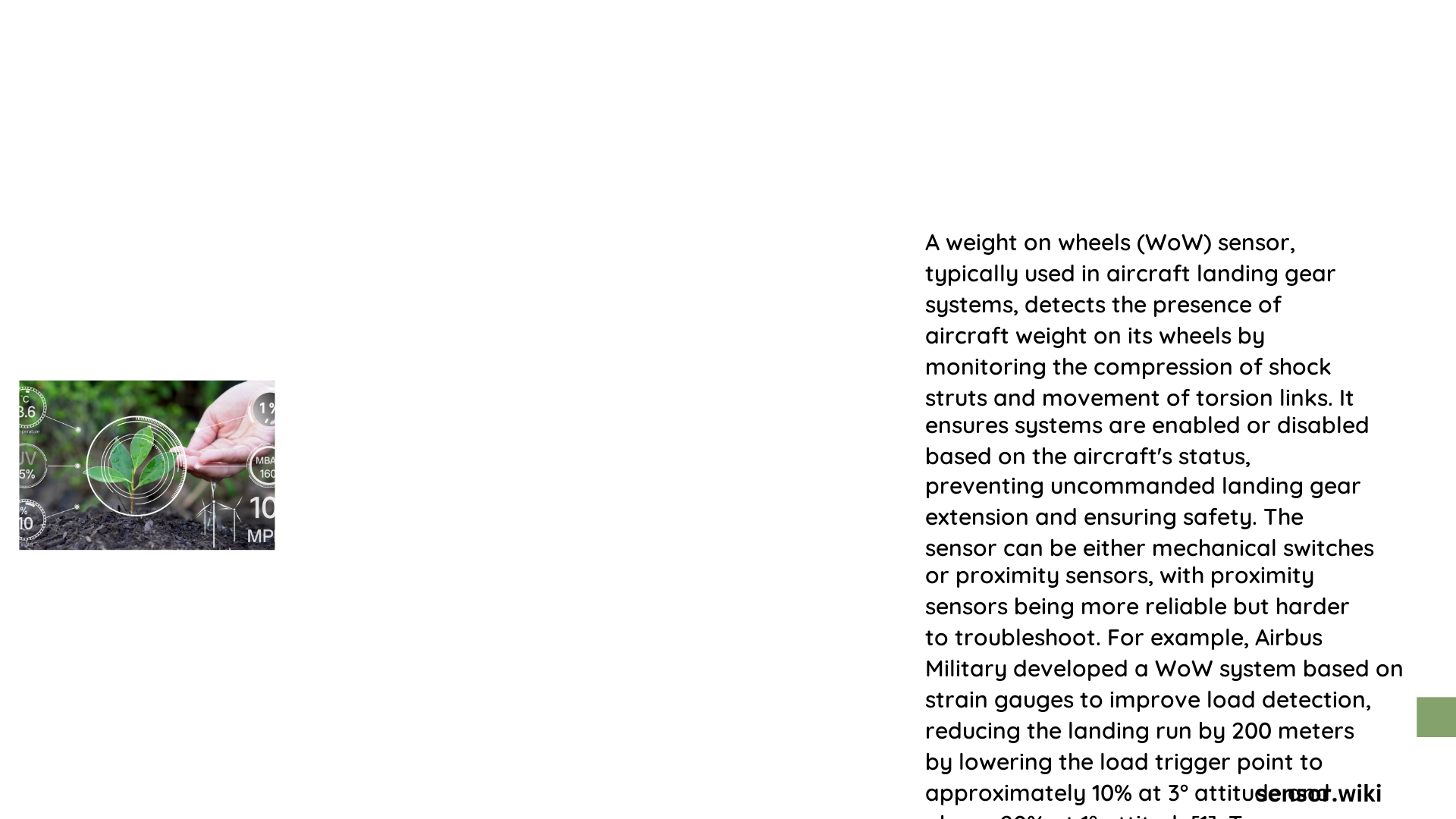Weight on wheels (WoW) sensors are critical aerospace technologies that precisely measure aircraft landing gear loads, enabling crucial safety and operational monitoring through advanced sensing mechanisms like strain gauges, LIDAR, and fiber optic systems. These sophisticated sensors provide real-time data about aircraft weight distribution, helping pilots and ground crews make informed decisions during critical flight phases.
What Are Weight on Wheels Sensors?
Weight on wheels sensors are specialized measurement devices designed to detect and quantify the load applied to an aircraft’s landing gear during ground and flight operations. These sensors play a pivotal role in:
- Ensuring aircraft structural integrity
- Monitoring landing gear performance
- Providing critical operational data
- Enhancing overall flight safety
How Do Different Weight on Wheels Sensors Work?
Strain Gauge Weight on Wheels Sensors
Key Characteristics:
– Uses precision strain gauge technology
– Measures load through mechanical deformation
– Integrated into landing gear structural components
| Sensor Type | Measurement Principle | Accuracy Range |
|---|---|---|
| Strain Gauge | Mechanical Strain Detection | ±0.5% |
| LIDAR | Optical Distance Measurement | ±1% |
| Fiber Bragg Grating | Wavelength Shift Analysis | ±0.1% |
LIDAR-Based Weight on Wheels Sensors
LIDAR sensors utilize light detection and ranging technology to:
– Create precise 3D images of landing gear
– Measure compression and load distribution
– Provide real-time geometric analysis
Fiber Bragg Grating (FBG) Sensors
FBG sensors offer unique advantages:
– Ultra-high precision measurements
– Immunity to electromagnetic interference
– Lightweight and compact design
What Are the Installation Challenges?
Installing weight on wheels sensors requires:
- Precise mechanical integration
- Robust environmental protection
- Minimal additional aircraft weight
- Compatibility with existing systems
How Do Technicians Calibrate These Sensors?
Calibration processes involve:
– Establishing baseline measurements
– Conducting multiple load tests
– Verifying sensor accuracy
– Implementing temperature compensation
What Maintenance Strategies Ensure Sensor Reliability?
Recommended maintenance includes:
– Regular diagnostic testing
– Periodic recalibration
– Environmental protection checks
– Replacement of worn components
Conclusion

Weight on wheels sensors represent a critical technological advancement in aviation safety and operational efficiency. By providing precise load measurements, these sensors contribute significantly to aircraft performance monitoring and risk mitigation.
